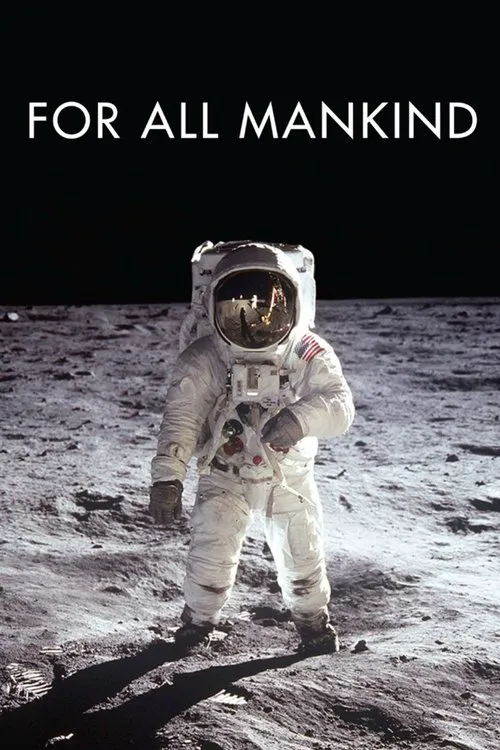For All Mankind

Plot
"For All Mankind" is a documentary film released in 1989, directed by Al Reinert. The film takes a unique approach to documenting the Apollo program, using actual footage from NASA archives alongside a narrative structure that incorporates voiceovers from the astronauts themselves. By weaving together the astronauts' personal stories with the footage, Reinert creates an intimate and immersive portrayal of one of the most epic achievements in human history. The film opens with the Apollo 11 mission, providing an eyewitness account of Neil Armstrong's historic moonwalk. As the Apollo 11 capsule re-enters Earth's atmosphere, footage of the crew's excitement and relief is juxtaposed with the vastness of space, underscoring the immense scale of what they've accomplished. This initial sequence sets the tone for the rest of the film, which will similarly blend the scientific with the personal, the awe-inspiring with the mundane. Reinert's narrative begins to diverge from a traditional documentary format as he introduces the astronauts as multifaceted individuals, whose experiences and personalities extend far beyond their roles as space explorers. We hear about Wally Schirra's struggles with the media and his own sense of isolation; about Frank Borman's quiet determination and sense of duty; and about Jim Lovell's anxiety and his eventual role as a seasoned leader. The film cuts between archival footage of the Apollo missions - the training sessions, the launch sequences, and the time spent in orbit around the moon - and intimate portraits of the astronauts themselves. In a poignant sequence, Reinert shows footage of the Apollo 13 crew, including James Lovell, Jack Swigert, and Fred Haise, who narrowly averted disaster when an explosion crippled their spacecraft. This event serves as a poignant reminder of the risks that astronauts took every time they ventured into space. One of the most striking aspects of "For All Mankind" is its use of music. The film features a stunning soundtrack, created by Brian Eno, David Holmes, and Reinert himself, which incorporates a haunting and atmospheric soundscape of ambient noise, synthesizers, and found sounds. This is paired with a selection of popular songs from the 1960s and 1970s, such as those by The Beach Boys and Bob Dylan. The effect is enchanting, imbuing the documentary with a dreamy, ethereal quality that complements its themes of wonder and exploration. Reinert's decision to juxtapose the astronauts' stories with footage from the missions themselves serves a dual purpose. On one hand, it provides a visceral sense of the events that unfolded during the Apollo program. We see Neil Armstrong stepping out of the lunar module Eagle onto the moon's surface, and we hear the audio recording of his famous words, "That's one small step for man, one giant leap for mankind." We are privy to the cramped quarters of the Apollo 7 spacecraft, where astronauts Walt Cunningham, Donn Fulton Eisele, and Walter Schirra endured grueling heat and radiation. On the other hand, this juxtaposition also serves to humanize the astronauts, drawing attention to the personal stakes behind the historic events of the Apollo program. We see them struggle with homesickness, cope with fatigue, and face their own fears. This is most evident in a poignant sequence where we see Frank Borman's face contorted with anxiety as he navigates a treacherous landing on the moon. "For All Mankind" offers a testament to NASA's Apollo program, one that moves beyond the scientific achievements to the very people who made it all possible. Through their stories, we gain a deeper understanding of the Apollo program, not just as a technological and scientific triumph, but as a testament to human ingenuity, courage, and perseverance in the face of incredible odds.
Reviews
Recommendations




